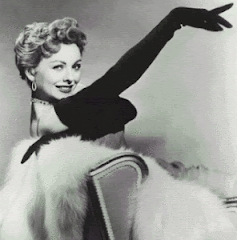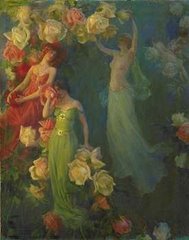 Why is it that if you mix the colors blue and yellow you will get a green color? We know it, but why is it? I can't give a logical explanation for it (maybe someone likes to explain), I only know that it is. I love to read the blog of Octavian 1000 Fragrances, and read the post where he asks a very interesting question. He asks why it is that certain combinations of perfume materials smell a certain way, if there are 'rules' for it and how to control it.
Why is it that if you mix the colors blue and yellow you will get a green color? We know it, but why is it? I can't give a logical explanation for it (maybe someone likes to explain), I only know that it is. I love to read the blog of Octavian 1000 Fragrances, and read the post where he asks a very interesting question. He asks why it is that certain combinations of perfume materials smell a certain way, if there are 'rules' for it and how to control it.I don't know why some combinations of materials smell a certain way, I just know that it is. If we smell a rose or jasmine we smell a combination of different aromatic chemicals, we recognize the combination of these chemicals as a rose or jasmine scent. If we smell a combination of Benzyl Acetate and Indole, we recognize some sort of jasmine scent, and if we smell a combination of Phenylethyl Alcohol and Geraniol we recognize some sort of rose scent. If I would combine these four materials of the rose and jasmine; Benzyl Acetate, Indole, Phenylethyl Alcohol and Geraniol, and add for example Ionones, such as Methyl Ionone Alpha and Beta Ionone, the result would smell a bit like raspberry. But if I would combine the four materials(Benzyl Acetate, Indole, Phenylethyl Alcohol and Geraniol) with Linalool, Methyl Anthranilate and Linalyl Acetate, the result would smell like orange blossoms. Why this is? I don't know, it's how the combinations are recognized. This is what a perfumer calls 'smelling in patterns', we smell different aromatic materials, but we recognize them as something familiar, because we know the smell of the combination of these chemicals. That's why we can recognize a perfume in an instant, even though it contains hundreds of different chemicals.
If I'm creating a perfume, I don't build it from base towards top notes. I start with a combination of materials, an accord. I don't see the materials as were it single notes, I use them in combination with other materials. I want to know the general impression the perfume will have before I go further. It's not that if you combine fruity, floral, woody and musky notes, the perfume will smell like that; fruity, floral, woody and musky. The combinations of these notes will turn into something complete new, sometimes in a way you didn't expect. That's why I can't build a perfume from base to top notes, how would I know how the combination of these notes would smell like in the end? It would be like I'm creating a perfume, but I have no idea, or control over how it will smell like, I can't 'see' (read smell) the total picture of the perfume if I start from the base and build it up towards the top. I have to find out, beforehand, how the combination of the most important materials of the perfume will smell like.
That's why I'm always 'playing' with materials, I always try to find new accords, nice combinations of materials. I put the materials on scent strips and hold them to my nose, to smell the combination of these materials. The combinations of these materials sometimes smell totally different than expected, a green note can turn into a fruity note, a material that appears as very weak can unexpectedly change the overall picture of the perfume tremendous, a material that appears as very strong on the other hand, can become very weak in combination with other materials, materials which smell like they wouldn't combine together, could become a wonderful combination etc. I know that some combinations smell a certain way because I read about it, but a lot of combinations I have to find out by myself. If I found a nice combination of materials which work real well together, I use these accords as my starting point for a perfume. This gives some control, but it's impossible to know the result of adding more materials. It's an endless way of experimentation's and experience. That's why I love to make perfumes, it always surprises me, I never know the result some combinations will give. Even though I learned and experimented a lot, it is and it will always be a mystery to me. A mystery I love.
Read here more about accords












